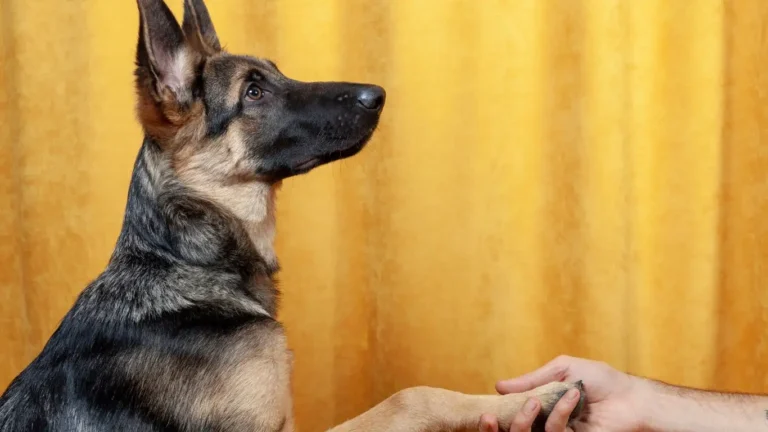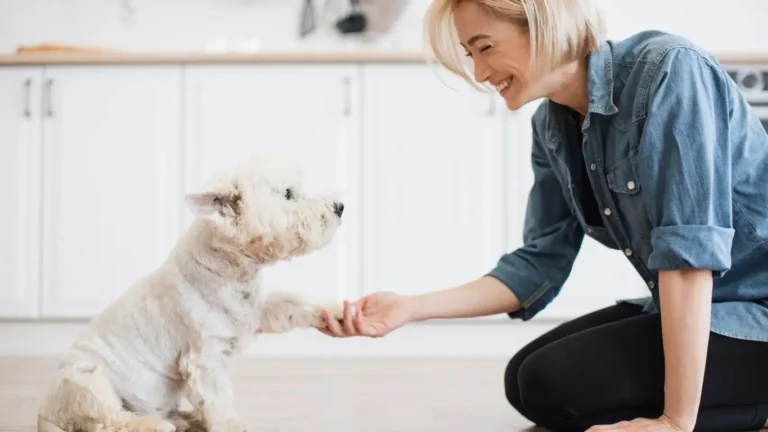10 Effective Tips on How to Train a Dog to Stop Jumping on the Couch Fast
If you’re struggling with a dog who can’t seem to resist jumping on the couch, you’re not alone. As a Veterinary Technician specializing in nutrition, I’ve worked with many dog owners who are frustrated by their furry friends’ couch-hopping habits. Not only can this be a behavioral challenge, but it can also lead to discomfort or even health issues if your dog is constantly on furniture. So, how do you train a dog to stop jumping on the couch? Let’s break it down step by step to help you regain control of your space and teach your dog some boundaries without resorting to harsh tactics. You’ll be surprised at how simple adjustments in your approach can make a huge difference in your dog’s behavior.
Understanding Why Dogs Jump on the Couch

Before diving into how to train a dog to stop jumping on the couch, it’s important to understand why dogs do it in the first place. Dogs are naturally social creatures, and they love being close to their pack (that’s you!). The couch or furniture is often seen as a place of comfort and a way to be near you. It’s also a space that can offer warmth, a cozy spot to rest, or simply a great vantage point to keep an eye on everything happening around the house.
But sometimes, it’s not just about seeking comfort. Some dogs may jump on the couch out of excitement, curiosity, or boredom. I’ve seen plenty of dogs who can’t resist the temptation to leap onto the couch just to explore or get a better view. In these cases, it’s less about comfort and more about seizing an opportunity to engage with their environment, especially if they’re left alone in a room for too long or don’t have enough mental stimulation.
Is It a Behavioral Issue or a Bad Habit?
In some cases, your dog’s couch-jumping could be an ingrained habit, while in others, it’s part of a larger behavioral issue. It’s essential to distinguish between the two so you can address the root cause effectively. In my experience, dogs with a strong need for attention (especially in puppies) often view the couch as a gateway to getting closer to you or receiving affection. The jumping itself may be reinforced by your reaction—whether you’re pushing them down, giving them attention, or allowing them on the couch for short periods. If they’re rewarded for jumping up (even unintentionally), they’ll keep doing it.
Alternatively, if your dog is constantly anxious or bored, they might jump on the couch because it offers them a sense of security or a way to expend energy. I’ve helped countless pet owners with hyperactive dogs or those who are left alone for long stretches of time. In these cases, the behavior might be more about needing to release pent-up energy rather than a desire to claim your couch.
Training Your Dog to Stop Jumping on the Couch: The First Steps

Now that you understand why your dog might be jumping on the couch, it’s time to talk about how to train them to stop doing it. This isn’t about scolding or punishing your dog, but rather about setting clear boundaries and teaching them what’s acceptable. The first step in any successful training plan is consistency and patience.
Here are the first things you should do to begin training your dog to stay off the couch:
- Establish Boundaries Early: Dogs thrive on routine and clear guidelines. Make sure everyone in your household is on the same page about whether or not the dog is allowed on the couch. If some people let the dog jump up while others say “no,” the confusion can lead to inconsistent behavior and reinforce the jumping habit.
- Use Positive Reinforcement: Instead of punishing your dog for jumping on the couch, reward them when they stay off. Every time they stay on the floor or lie on their own bed, praise them or give them a treat. This helps them associate staying off the couch with positive outcomes.
- Provide Alternatives: Dogs need to know where they can go if the couch is off-limits. Set up a comfortable space or dog bed in the same room. I’ve seen many dogs happily settle down in their own designated spot once they get the hang of it, especially if it’s cozy and positioned near the family action.
- Redirect Attention: If you catch your dog starting to jump up, immediately redirect them to their own bed or a different area. Don’t wait too long, or they’ll forget what they were doing. Redirection is one of the most effective tools in dog training!
Why Consistency is Key
Consistency is essential in any form of dog training. If your dog gets mixed signals (for example, allowed to jump on the couch during movie night but not on other days), they won’t be able to figure out what you actually want from them. I’ve found that the most successful cases are those where owners stay firm with their rules, without exception. Your dog doesn’t understand why they can get on the couch sometimes and not others—they need clear, consistent expectations in order to learn.
Using Commands to Help With the Training

Alongside positive reinforcement, teaching your dog specific commands like “off” or “down” is super helpful when training them to stop jumping on the couch. These commands give your dog a clear verbal cue to understand what behavior you expect from them. Start by using a treat or favorite toy to guide your dog off the couch when they attempt to jump up. Once they’re on the floor, immediately reward them with praise or a treat, and say the command firmly but kindly.
Over time, your dog will associate the command with the action of getting down from the couch. Eventually, they’ll start listening to the cue before even attempting to jump up. The key is to be patient and to repeat these steps daily so that the behavior becomes ingrained.
Dealing with Setbacks: What to Do When Your Dog Breaks the Rules

It’s pretty common for dogs to have some setbacks during the training process. After all, we’re teaching them something new, and like us, they have their good days and bad days. You might be thinking, “I’ve been so consistent, why is my dog jumping on the couch again?” Let’s dive into what could be going wrong and how to fix it.
One thing I always remind pet owners is that training a dog is a marathon, not a sprint. Dogs need repetition, time, and most importantly, patience. If your dog has already mastered the “off” command and was doing great but suddenly starts jumping back on the couch, it could be because of a few reasons:
- Inconsistent Reinforcement: If there was a slip-up or someone in your house allowed the dog on the couch just once, your dog may think that the rule is no longer in place. Dogs are quick to test boundaries, and even one time of “breaking the rules” can send mixed signals.
- Stress or Anxiety: Sometimes dogs act out due to stress or anxiety. If your dog has recently gone through a change (moving to a new home, a new family member, or even changes in your schedule), they might jump on the couch as a way to self-soothe. In these cases, it’s crucial to address the root cause of the stress.
- Reinforcing the Behavior by Accident: If you’ve been giving your dog attention when they jump on the couch (even negative attention, like pushing them off), this might actually reinforce the behavior. In the dog world, any attention can be rewarding, even if it’s not positive attention.
If you hit a bump in the road, take a deep breath and remember that setbacks are normal. Go back to the basics and be extra consistent. Don’t let frustration take over—your dog is learning, and sometimes they need a little extra time to get it right.
Training Tools: The Role of Crates, Gates, and Leashes

If you’re dealing with a particularly stubborn pup or want to speed up the process, there are a few tools that can help make training easier and more effective. Crates, gates, and leashes can be incredibly helpful in setting boundaries and redirecting behavior. Here’s how I’ve used them in my own practice as a veterinary tech to prevent couch-jumping and reinforce proper behavior.
Crates: A crate can be a great tool for teaching your dog boundaries, especially when you’re not home to supervise. If your dog is constantly trying to jump on the couch when you’re away, a crate can prevent them from having access to the furniture. It’s also a safe space for your dog to relax and unwind. I’ve seen many dogs settle into their crates over time, especially when it’s associated with positive reinforcement (like treats or toys).
Gates: If you’re trying to restrict access to the living room or a particular area of the house, using a baby gate or dog gate can be a game-changer. Gates allow you to keep your dog away from the couch when you’re not able to supervise directly. When they’re unable to get to the couch, they’ll learn that it’s off-limits—and will stop trying to sneak up there.
Leashes: Sometimes, simply keeping a leash on your dog can help with redirecting their behavior. I always recommend using a leash when you’re working on training your dog in new areas. When they start to jump on the couch, you can give a gentle tug to redirect them to the right spot. It also allows you to quickly intervene when they forget the rules.
How Long Does It Take to Train a Dog to Stop Jumping on the Couch?
This is the question every dog owner asks, and honestly, it depends on your dog. From my experience, dogs learn at different rates, and while some might catch on quickly, others may need more time. Puppies, in particular, can take a little longer simply because they’re still learning about the world and testing boundaries. With consistent training, most dogs can learn not to jump on the couch within a few weeks to a couple of months.
But don’t get discouraged! If it takes longer than you expected, just keep reinforcing the rules and be patient. Every dog is different, and some may require more practice to get the hang of it. One thing I tell all pet owners is that the journey is just as important as the destination. The process of bonding with your dog and teaching them how to behave is incredibly rewarding, even if it takes a bit of time.
Distraction Techniques: Keeping Your Dog Entertained

One way to prevent your dog from getting bored and jumping on the couch is to keep them mentally and physically stimulated. Boredom can lead to all sorts of unwanted behaviors, like couch-jumping. By providing distractions and engaging activities, you can prevent your dog from seeking comfort or excitement on the furniture.
Here are a few distraction techniques that have worked wonders for my clients:
- Interactive Toys: Dogs love toys that challenge them mentally, and interactive puzzle toys can keep them occupied for long periods. Fill a toy with treats and watch as your dog works to figure it out. This kind of stimulation helps them focus on something other than jumping on the couch.
- Regular Exercise: One of the most effective ways to curb couch-jumping behavior is by tiring your dog out through regular exercise. Whether it’s a long walk, a game of fetch, or some playtime at the dog park, giving your dog an outlet for their energy will reduce their need to seek attention by jumping on the furniture.
- Training Sessions: Short, positive training sessions throughout the day can help redirect your dog’s focus away from jumping. Use this time to practice the “down” command or other obedience cues. These sessions also tire out their minds and give them a sense of accomplishment.
By providing your dog with the right mental and physical stimulation, you’ll reduce the chances of them seeking attention in inappropriate ways—like by jumping up on the couch. With patience, consistency, and a few creative tricks, you’ll soon have a well-behaved dog who knows the limits of the couch.
Preventing Future Couch-Jumping: Long-Term Strategies

Now that your dog has learned not to jump on the couch, you might be wondering how to make sure this behavior doesn’t slip back into old habits. Maintaining consistent training, introducing new routines, and reinforcing your dog’s boundaries will help keep the couch-jumping behavior in check for the long haul. After all, dogs are creatures of habit, and they thrive on routine, so your dog needs a structure that’ll keep them engaged and content without breaking the rules.
Here’s how you can set your dog up for success and make sure that they stay well-behaved around the couch:
- Revisit Training Periodically: Even after your dog has mastered the art of staying off the couch, it’s a good idea to revisit training every so often. This can be a simple refresh of commands like “off” or “down” to make sure they’re still sharp. I’ve seen cases where a dog may revert back to their old habits if they haven’t practiced in a while, so keep the training sessions fun and short!
- Keep Their Space Comfortable: If your dog has their own bed or designated area to relax in, make sure it’s comfy and inviting. The more positive associations they have with their own space, the less likely they’ll feel the need to jump on the couch. I often recommend giving your dog a special treat or toy they only get when they’re in their own spot, which will encourage them to hang out there instead of on the furniture.
- Ongoing Positive Reinforcement: Even once your dog is no longer jumping on the couch, continue to reward good behavior. Praise them for lying on their bed or calmly staying on the floor. Positive reinforcement doesn’t stop just because the couch-jumping has stopped. It’s important to keep rewarding the behavior you want to see.
When to Seek Professional Help

Sometimes, despite your best efforts, you might find that your dog is still struggling with their couch-jumping habit. If you’ve tried all the techniques we’ve discussed and nothing seems to be working, it might be time to seek professional help. There’s no shame in reaching out to a trainer, especially when you’ve exhausted your own methods. A certified dog trainer can provide personalized strategies tailored to your dog’s specific needs.
As a veterinary technician with years of experience, I’ve worked alongside many trainers to help resolve behavioral issues in pets. A professional trainer can assess your dog’s temperament and provide hands-on training that you might not be able to do on your own. Trainers are also invaluable if your dog’s behavior stems from deeper anxiety or fear-related issues that you may not be able to address alone.
There are many training styles available, including positive reinforcement methods, clicker training, and even more specialized techniques like counter-conditioning and desensitization if your dog has anxiety issues. The right trainer can make all the difference in getting your dog to break the habit of couch-jumping and adopt healthier behavior patterns.
When Couch-Jumping May Be a Sign of Health Issues
While it’s often seen as a simple behavior issue, there are times when excessive couch-jumping could indicate a more significant health problem. If your dog is jumping on the couch more frequently or in a more frantic manner than usual, it’s worth considering if something is going on health-wise. I’ve worked with clients who noticed that their dog’s sudden urge to jump up on the couch was actually a symptom of joint pain or anxiety due to an underlying health condition.
If your dog’s behavior changes suddenly or seems out of character, it might be time for a check-up with your vet. Conditions like arthritis, hip dysplasia, or other musculoskeletal issues can make it difficult for your dog to relax on the floor or find comfortable spots. In some cases, they might jump on the couch for relief, as it provides an easier or more comfortable spot to lie down.
It’s always a good idea to rule out medical issues, especially if you notice that your dog is displaying new, unusual behavior patterns. Early detection of health problems can lead to better treatment options and, in turn, improve your dog’s overall well-being. If you’re concerned, a quick vet visit can give you peace of mind.
Health Resources for Dog Owners
Here are some trusted resources for further reading on dog health, behavior, and training:
- American Kennel Club (AKC): A great resource for dog training tips, breed information, and health advice.
- PetMD: Offers expert advice on dog behavior, health concerns, and wellness tips.
- Cesar’s Way: A site dedicated to positive reinforcement training, with tons of helpful advice from dog behaviorist Cesar Millan.
Disclaimer
While the advice in this article is based on years of experience as a veterinary technician specializing in dog care, it’s always important to tailor your approach to your specific dog’s needs. Every dog is unique, and what works for one might not work for another. If you’re unsure about any of the techniques or if your dog’s behavior doesn’t improve, I highly recommend consulting with a professional trainer or your veterinarian. They can provide insights specific to your dog’s temperament and health condition.
Also, always be mindful of your dog’s health. If you suspect that health issues might be affecting their behavior, a visit to the vet can help identify any underlying problems. In some cases, the cause of couch-jumping may not be behavioral at all, but rather physical or emotional distress that requires professional attention.





